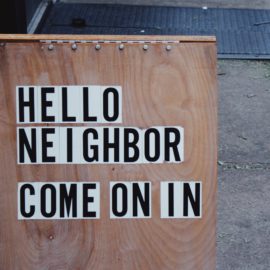

This article is an excerpt from the Shortform book guide to "Awe" by Dacher Keltner. Shortform has the world's best summaries and analyses of books you should be reading.
Like this article? Sign up for a free trial here.
What does awe do in our lives? What’s its purpose? How can this powerful emotion transform our daily experiences?
Psychology professor Dacher Keltner explores the biological and psychological effects of awe, revealing its crucial role in human development, social bonding, and creative expression. He shows how awe serves as a bridge between individual experience and collective consciousness.
Read on to discover how this remarkable emotion serves a purpose in your life.
What Awe Does
What does awe do for us? Why do we have this sense? The biological effects of awe serve as strong clues about the reasons it developed as an emotional response. Keltner suggests that awe helps us transcend our egos and connect with larger, unifying forces in life. Such connections help people consider new ideas, find common ground with others, and identify as members of a larger community.
(Shortform note: While Keltner presents the emotion of awe as a springboard to a more fulfilling life, in Transcend, psychologist Scott Barry Kaufman suggests that awe fills basic psychological needs that are otherwise harmful to ignore—namely, the need to love others, seek out new experiences, and to strive for meaningful, life-defining goals. According to Kaufman, awe and other transcendental states of mind open the door to fulfilling all these needs, making it possible to reach your life’s full potential.)
Keltner points out that awe and wonder make us more curious and receptive to new experiences and ideas. People who have awe-inspiring experiences often report feeling more humble, collaborative, and willing to be kind. Keltner’s research also shows that after feeling awe, people are more likely to share resources, volunteer time, and show concern for others—through, for example, hosting social events, taking part in charity campaigns, and reaching out to others at worship services.
| Creativity and Awe Though Keltner describes awe as a “receptive” mental state, artists, musicians, and other creative people generate awe as part of the creative process—and there’s no need to feel excluded from this group. In The Creative Act, Rick Rubin suggests that everyone’s an artist, whether or not you create something tangible, because creativity is a way of being in the world and our lives are a constant act of self-expression. By adopting this artistic mindset, Rubin argues that you tap into an innate part of human consciousness that transcends your individual experience. In other words, just as Keltner states that awe connects you to the wider world, Rubin says that tapping your creativity accomplishes much the same thing. Similar to how Keltner links awe and social activity, Rubin lists human connection as both a source of inspiration and one of the chief reasons why generating awe through art is worthwhile. Rubin explains that by engaging in creative acts, you not only express your individual self but also contribute to the collective human experience, fostering empathy, understanding, and innovation. Rubin’s definition of creativity includes any act of bringing something new into existence, such as the charitable and community-building projects that Keltner cites as a side-effect of awe. According to Rubin, every act of creation, no matter the context, helps us recognize that we’re part of something larger than ourselves. |
Awe as a Unifier
Keltner says that a key aspect to gatherings, from large-scale events to walking with your friends to lunch, is that they involve synchronized motion. Research shows that coordinated motion leads to increased cooperation, empathy, and a sense of belonging. When linked to events that trigger awe, like running a marathon or dancing at a wedding, people’s mirroring of each other’s movements aligns their biological rhythms and plants the seeds of a sort of “collective consciousness.” Keltner argues that this synchronization formed part of humanity’s social evolution and continues to shape our social behavior, fulfilling our underlying need for connection and producing profound experiences of unity.
(Shortform note: The idea of synchronized motion affecting attitudes, emotions, and social bonding might be explained by the theory of embodied cognition, which proposes that your cognitive processes are deeply rooted in your body’s interactions with its environment. Proponents of embodied cognition argue that your inner life isn’t just a property of the mind; it emerges from the continuous interactions between your brain, your body, and the world around you—including any group of people you’re a part of. In the group activities Keltner mentions, embodied cognition theory predicts that coordinating with the actions of people around you can directly influence your mental state and perceptions, opening doors for increased collaboration.)
Keltner suggests that collective awe is a fundamental aspect of our social nature, and not just a pleasant side effect of human gatherings. His studies show that people experiencing awe are more likely to see each other in terms of their shared qualities rather than what sets them apart. In these moments, be they weddings, graduations, sporting events, or political rallies, individuals feel a sense of unity and shared emotion with those around them. Keltner posits that understanding and cultivating these experiences of synchronized positive emotion can lead to greater well-being, stronger communities, and more frequent feelings of wonder in our lives.
(Shortform note: While collective awe can foster unity and prosocial behavior, it can also lead to undesirable outcomes such as groupthink or blind allegiance to institutions or organizations. In Wonderstruck, Helen De Cruz warns that the emotional power of awe can make people susceptible to manipulation by those who would exploit such feelings for personal or political gain. Additionally, Keltner himself admits that the socially uplifting effects of awe may be transient, with people returning to baseline levels of self-focus and individualism once the immediacy of the experience fades.)

———End of Preview———
Like what you just read? Read the rest of the world's best book summary and analysis of Dacher Keltner's "Awe" at Shortform.
Here's what you'll find in our full Awe summary:
- The positive effects of experiencing awe-inspiring moments
- How the arts can help you nurture awe
- How awe brings us together as human beings






